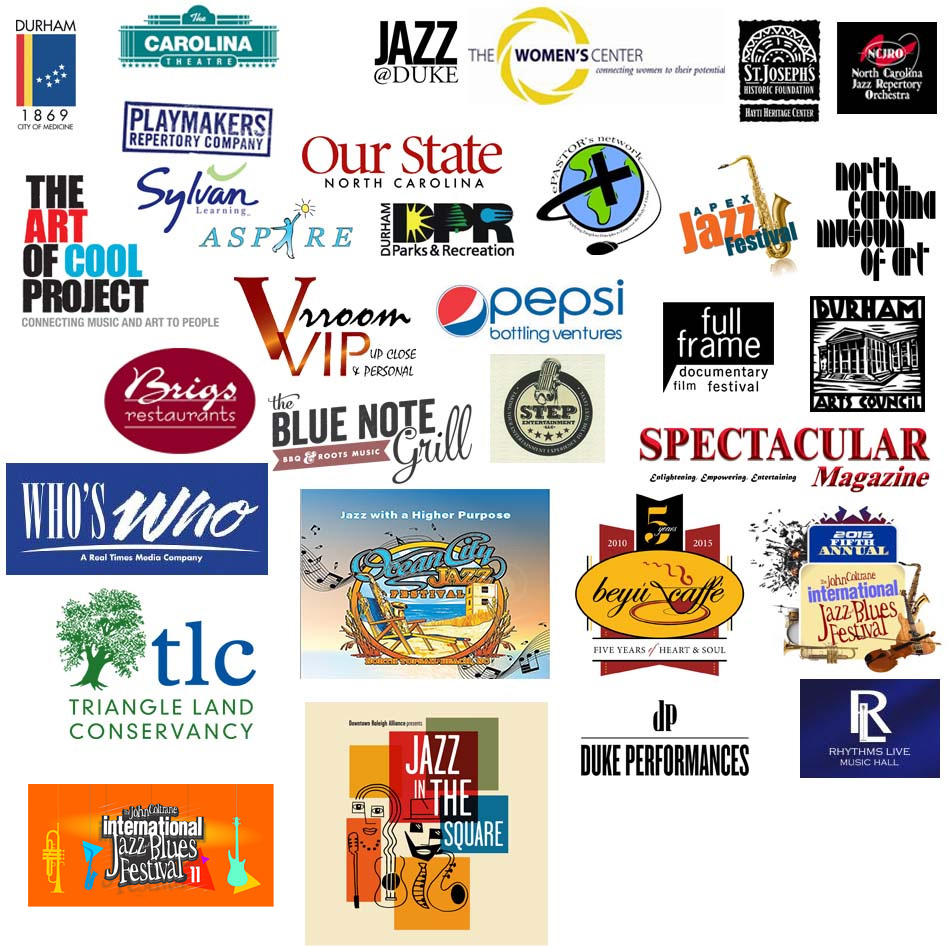Archive for June, 2010
Wednesday, June 23rd, 2010
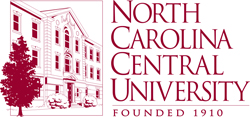 North Carolina Central University officials are inviting the public to a 100th birthday bash on campus on July 8. North Carolina Central University officials are inviting the public to a 100th birthday bash on campus on July 8.
The celebration will include dedications of a newly installed Centennial Garden on Fayetteville Street, the Centennial Chapel, (the relocated and repurposed Holy Cross Church) and a historic plaque commemorating the former site of Hillside High School. It is the final celebration of NCCU’s centennial.
The birthday celebration will be held from 3 p.m. to 6 p.m. on and about the Brant Street plaza. After the dedications, the party will start with birthday cake and music.
Free parking will be available at NCCU lots on Lawson Street and Nelson Street and with shuttle service from St. Titus and St. Joseph’s church lots.
The celebration originally was planned for July 10, but was rescheduled to better conform to the itinerary for the North Carolina Central University Alumni Association’s National Convention and Centennial Celebration, which is being held in Durham from July 8 through July 10. Alumni can register for the convention and view the updated schedule of events at www.nccualumni.org.
The Centennial Garden, currently under construction, will be a swirling pattern of walkways and perennial plantings, with a mix of shrubs and hardwood and flowering trees. It will feature a fountain, and is situated on Fayetteville Street between the Shepard House and the former Holy Cross Church.
In April, the Holy Cross Roman Catholic Church was moved from Alston Avenue on the eastern edge of campus to the Fayetteville Street site. A new NCCU nursing school facility is being built on the Alston Avenue land. The stone chapel building, once home to a mainly African-American Catholic congregation since 1953, is now owned by NCCU and will be used mainly for meetings. The Diocese of Eastern North Carolina built a new facility for the congregation in 2006.
For nearly half a century, Hillside High School was Durham’s secondary school for African-Americans, at a time when segregation ruled the South. Hillside was integrated in the 1960s. The building, on Concord Street, was closed in 1995 when the Durham Public Schools built a new structure further south on Fayetteville Street. The school system donated the building to NCCU, which demolished it and used the acreage for its Mary M. Townes Science Building and the Biomanufacturing Research Institute and Technology Enterprise.
At first named the National Religious Training School and Chautauqua for the Colored Race, NCCU opened its doors to students on July 5, 1910, when Durham was a small tobacco town, and opportunities for higher education for African-Americans were slight. In less than two decades, the institution had become the first African-American liberal arts college in the nation to receive taxpayer support.
The founder was Dr. James E. Shepard, a pharmacist trained at Shaw University in nearby Raleigh. Shepard became a national leader in education, especially for African-Americans, as well as a business and religious leader.
The event is free and open to the public. For more information, contact the NCCU Office of Public Relations at (919) 530-6295.
Posted in Public Affairs | 17 Comments »
Monday, June 21st, 2010
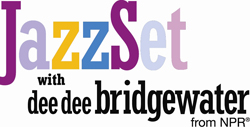 NPR’s JazzSet© with Dee Dee Bridgewater is the jazz lover’s ears and eyes on the world of live music. It presents today’s best jazz artists in performance on stages around the world, taking listeners to Puerto Rico and Cuba, as well as Marciac in the French countryside and across the North American continent from Montreal to Monterey. NPR’s JazzSet© with Dee Dee Bridgewater is the jazz lover’s ears and eyes on the world of live music. It presents today’s best jazz artists in performance on stages around the world, taking listeners to Puerto Rico and Cuba, as well as Marciac in the French countryside and across the North American continent from Montreal to Monterey.
Closer to home — Jazz 88.3, WBGO-FM in Newark, New Jersey — the program drops in on nightclubs and neighborhoods where people are playing quality jazz to appreciative audiences. Some of the artists appearing on JazzSet stage include Herbie Hancock, Joshua Redman, Nicholas Payton, Joe Williams, Dianne Reeves, and Shirley Horn.
JazzSet has received three distinguished awards: the New York Festivals Gold Medal (1997) and New York AIR Award (in both 1998 and 1999). To find out if you can hear JazzSet in your area, check our station carriage list.
Host Dee Dee Bridgewater
Only a handful of entertainers have ever commanded such depth of artistry in every medium. Fewer still have won a Tony, two Grammy®s, and the top musical honor in France — the Victoire de la Musique — plus been nominated for London theater’s Laurence Oliver Award. Dee Dee captured the hearts of audiences worldwide in The Wiz with her signature song, “If You Believe.” Nick Ashford of Ashford and Simpson said Dee Dee’s rendition “personified a generation and gave us all hope.”
As a sparkling ambassador for jazz, she bathed in its music before she could walk. Her mother played the greatest albums of Ella Fitzgerald, whose artistry provided an inspiration for Dee Dee throughout her career. Her father was a trumpeter who taught music to Booker Little, Charles Lloyd and George Coleman, among others. It’s the kind of background that leaves its mark on an adolescent, especially one who appeared solo and with a trio as soon as she was able.
Dee Dee’s other vocation, that of globetrotter, reared its head when she toured the Soviet Union in 1969 with the University of Illinois Big Band. A year later, she followed her then husband, Cecil Bridgewater, to New York.
Dee Dee made her phenomenal New York debut in 1970 as the lead vocalist for the band led by Thad Jones and Mel Lewis, one of the premier jazz orchestras of the time. These New York years marked an early career in concerts and on recordings with such giants as Sonny Rollins, Dizzy Gillespie, Dexter Gordon, Max Roach and Roland Kirk, and rich experiences with Norman Connors, Stanley Clarke and Frank Foster’s Loud Minority.
Click here to learn more.
Schedule
Claudia Acuna At Newport, Branford Marsalis And Joey Calderazzo
Hiromi, Michel Camilo Trio At Newport
Benny Golson At 80 At The Kennedy Center
Edmar Castaneda At Tanglewood
Dee Dee Bridgewater And Dolphyana At The Detroit Jazz Festival
The Brubeck Brothers At Detroit
Posted in Music News | 6 Comments »
Thursday, June 17th, 2010
 A one-hour documentary will air in honor of Louis Armstrong Day, July 4 from 12-1pm. A one-hour documentary will air in honor of Louis Armstrong Day, July 4 from 12-1pm.
Veteran radio producer Joe Bevilacqua hosts this entertaining, informative hour, recorded in the French Quarter of New Orleans and featuring jazz great Wynton Marsalis, jazz author and historian Donald Newlove, WNYC Radio talk show host Leonard Lopate, members of the Preservation Hall Jazz Band, and others, on the origins of jazz, and the life and music and legendary trumpeter, LOUIS ARMSTRONG.
Also featured is the music of Armstrong throughout his long career, and rare recordings, including rare audio from a 1957 CBS TV documentary, with Edward R. Murrow.
A REVIEW: ***** Informational, Polished, Sound Rich Joe Bevilacqua strikes again with this superb documentary on the life and music of Louis Armstrong. The rich tapestry of music, interviews and sound from the streets of New Orleans is expertly produced. In addition to some rare recordings, the program includes interviews with Wynton Marsalis and others that really add to the focus of the program.
Visit the official museum page: http://www.louisarmstronghouse.org/
Posted in Music News | 1 Comment »
Sunday, June 6th, 2010
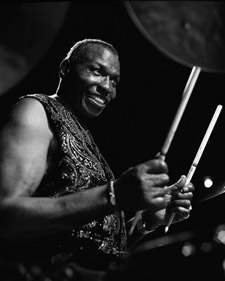 Photographed: Elvin Jones Elvin Jones
Elvin “The Emperor” Jones was best known for his association with the classic John Coltrane Quartet (1960-1965) but he also had a notable career as a bandleader and continued to be a major influence in music. One of the all-time great drummers (bridging the gap between advanced hard bop and the avant-garde), Jones is the younger brother of a remarkable musical family that also includes Hank and Thad Jones. After spending time in the Army (1946-1949), he was a part of the very fertile Detroit jazz scene of the early ’50s.
He moved to New York in 1955, worked with Teddy Charles and the Bud Powell Trio, and recorded with Miles Davis and Sonny Rollins (the latter at his famous Village Vanguard session). After stints with J.J. Johnson (1956-1957), Donald Byrd (1958), and Harry “Sweets” Edison, Jones became an important member of John Coltrane’s Quartet, pushing the innovative saxophonist to remarkable heights and appearing on most of his best recordings. When Coltrane added Rashied Ali to his band in late 1965 as second drummer, Jones was reportedly not pleased and soon departed.
He went on a European tour with the Duke Ellington Orchestra and then started leading his own groups, which in the ’90s became known as Elvin Jones’ Jazz Machine. He remained active well into the 2000s and continued to push himself musically with the Jazz Machine, inviting young lions into the fold and touring regularly. Jones recorded as a leader for many labels including Atlantic, Riverside, Impulse, Blue Note, Enja, PM, Vanguard, Honey Dew, Denon, Storyville, Evidence, and Landmark.
His dedication to and love of the drums were such that even in the face of health problems he continued to mount the drum stand, occasionally accompanied by an oxygen tank. On May 18, 2004, drum legend Elvin Jones suffered heart failure and passed away.
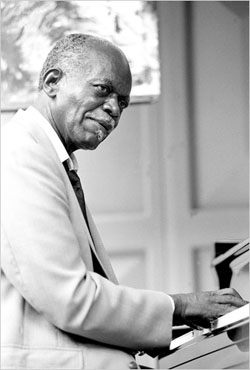 Photographed: Hank Jones Hank Jones
The oldest of the three illustrious Jones brothers (along with Thad and Elvin), Hank Jones was also the first of the great Detroit pianists (including Tommy Flanagan, Barry Harris, and Roland Hanna) to emerge after World War II, although by then he had long since left town. Jones played in territory bands as a teenager, and in 1944, he moved to New York to play with Hot Lips Page.
Influenced by Teddy Wilson and Art Tatum, Jones’ style was also open to bebop, and his accessible playing was flexible enough to fit into many genres. He was on several Jazz at the Philharmonic tours (starting in 1947), worked as accompanist for Ella Fitzgerald (1948-1953), and recorded with Charlie Parker. In the ’50s, Jones performed with Artie Shaw, Benny Goodman, Lester Young, Cannonball Adderley, and many others.
He was on the staff of CBS during 1959-1976 but always remained active in jazz. In the late ’70s, Jones was the pianist in the Broadway musical Ain’t Misbehavin’ and he recorded with a pickup unit dubbed the Great Jazz Trio which, at various times, included Ron Carter, Buster Williams, or Eddie Gomez on bass, and Tony Williams, Al Foster, or Jimmy Cobb on drums.
As a leader, Hank Jones recorded for many labels, including Verve, Savoy, Epic, Golden Crest, Capitol, Argo, ABC-Paramount, Impulse!, Concord, East Wind, Muse, Galaxy, Black & Blue, MPS, Inner City, and Chiaroscuro.
Hank Jones died in New York City on May 16, 2010, at the age of 91.
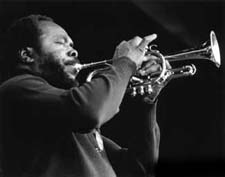 Photographed: Thad Jones Thad Jones
A harmonically advanced trumpeter/cornetist with a distinctive sound, as well as a talented arranger/composer, Thad Jones (the younger brother of Hank and older brother of Elvin) had a very productive career. Self-taught on trumpet, he started playing professionally with Hank Jones and Sonny Stitt when he was 16.
After serving in the military (1943-1946), Jones worked in territory bands in the Midwest. During 1950-1953 he performed regularly with Billy Mitchell’s quintet in Detroit and he made a few recordings with Charles Mingus (1954-1955). Jones became well-known during his long period (1954-1963) with Count Basie’s Orchestra, taking a “Pop Goes the Weasel” chorus on “April in Paris,” and sharing solo duties with Joe Newman. While with Basie, Jones had the opportunity to write some arrangements and he became a busy freelance writer after 1963.
He joined the staff of CBS, co-led a quintet with Pepper Adams, and near the end of 1965, organized a big band with drummer Mel Lewis that from February 1966 on, played Monday nights at the Village Vanguard. During the next decade the orchestra became famous and gave Jones an outlet for his writing. He composed one standard (“A Child Is Born”) along with many fine pieces including “Fingers,” “Little Pixie,” and “Tiptoe.”
Among the sidemen in the Thad Jones-Mel Lewis Orchestra (which started out as an all-star group and later on featured younger players) were trumpeters Bill Berry, Danny Stiles, Richard Williams, Marvin Stamm, Snooky Young, and Jon Faddis, trombonists Bob Brookmeyer, Jimmy Knepper, and Quentin Jackson, the reeds of Jerome Richardson, Jerry Dodgion, Eddie Daniels, Joe Farrell, Pepper Adams, and Billy Harper, pianists Hank Jones and Roland Hanna, and bassists Richard Davis and George Mraz.
In 1978, Jones surprised Lewis by suddenly leaving the band and moving to Denmark, an action he never explained. He wrote for a radio orchestra and led his own group called Eclipse. In late 1984 Jones took over the leadership of the Count Basie Orchestra but within a year bad health forced him to retire.
Thad Jones recorded as a leader for Debut (1954-1955), Blue Note, Period, United Artists, Roulette, Milestone, Solid State, Artists House, A&M, Metronome, and many of the Thad Jones-Mel Lewis Orchestra’s best recordings have been reissued.
Biographies by Scott Yanow
Posted in Artist of the Month | 3 Comments »
Sunday, June 6th, 2010
 Inspiring youth Inspiring youth
Kinston native Ira Wiggins, who now-heads the Jazz Studies program at North Carolina Central University, remembers playing in his brother’s R&B group in the ’70s and making a good living from the various clubs in the area.
“We played in Rocky Mount, Wilson, all the small towns, as well as Kinston, Goldsboro, Washington,” he says. “There was a lot of work for live musicians at the time. I think that’s one of the reasons we were inspired by a lot of the older
musicians that were passing the music along to the younger generation, and these people really play.”
But a series of events and cultural changes, including the demise of the tobacco industry and even the advent of disco, helped decimate what was once a thriving musical circuit for African-American musicians in the area. Wiggins remembers seeing gigs dry up as club owners decided to hire DJs, who came cheaper than a full band.
“We were a pretty good group at the time,” says Wiggins. “We would play the same thing thing the DJ played, and everybody would sit there. As the DJ played the same tune, everybody would get up and dance. It was a kind of dichotomy: The older generation didn’t want to go out and hear records, and the younger generation didn’t
want to go out and hear live music, so eventually I think a lot of the clubs died out because of lack of support.”
These days, the rich African American musical history is a little more hidden. One of the goals among the trail’s organizers is to reach young people, many of whom have no clue about the rich musical heritage of their own hometowns.
Parker, in particular, remembers working with a group of students in Kinston. Afterward, one of the organizers told him something he simply couldn’t believe.
“He said, ‘Maceo, you’re not going to believe this. One little black kid came up and said, ‘I never knew black people played saxophone.’ And he was sincere.”
“We want it also to inspire youth,” says Myers, of The Monitors. “People still want to come up to us and touch the horn, hit the drum, and stuff like that. I did that as a child rnyself. And that’s inspirational. ‘If he can do it… then maybe I can do that” ”
Inspiration and motivation are abundant at the Community Council for the Arts in Kinston. In a renovated historic grocery store across the street from boarded-up buildings and lots still empty after being devastated by Hurricane Floyd, the arts council plays host to a youth jazz group on Wednesdays, affording middle and high school students of all races the opportunities to leam and play.
In one recent youth group session, long;tirne Kinston High School band teacher Charles Richberg, seated in front of the students with an electric bass in his hands, calls out, “Who wans to do a solo?” One boywith a trumpet speaks up.The others are shy.
“Come on,” says Richberg. “This is what jazz is about!”
His passion shines.
“There’s so much pulling our young people away from music itself and telling them you have to be ready for the 21st century,” says Richberg, who taught Maceo Parker’s children and often jams with musicians in the area. “But nevertheless musicians are still going to be here, no matter how advanced in technology we become. We’re still going to need musicians.
“Will it ever come back? I’d love to see it come back, but that’s going to be a long-traveled road and old diehards like me, Ira, Maceo, we still keep diggog at it to make it happen. I don’t think it would reach the mass of people like it did then, but it will be a part of this community.”
Karen A. Mann is a freelance writer based in Raleigh. She wites about area music on her blog, “Mann’s World.”
Posted in Music News | 7 Comments »
|
 North Carolina Central University officials are inviting the public to a 100th birthday bash on campus on July 8.
North Carolina Central University officials are inviting the public to a 100th birthday bash on campus on July 8.

 NPR’s JazzSet© with Dee Dee Bridgewater is the jazz lover’s ears and eyes on the world of live music. It presents today’s best jazz artists in performance on stages around the world, taking listeners to Puerto Rico and Cuba, as well as Marciac in the French countryside and across the North American continent from Montreal to Monterey.
NPR’s JazzSet© with Dee Dee Bridgewater is the jazz lover’s ears and eyes on the world of live music. It presents today’s best jazz artists in performance on stages around the world, taking listeners to Puerto Rico and Cuba, as well as Marciac in the French countryside and across the North American continent from Montreal to Monterey. A one-hour documentary will air in honor of Louis Armstrong Day, July 4 from 12-1pm.
A one-hour documentary will air in honor of Louis Armstrong Day, July 4 from 12-1pm.


